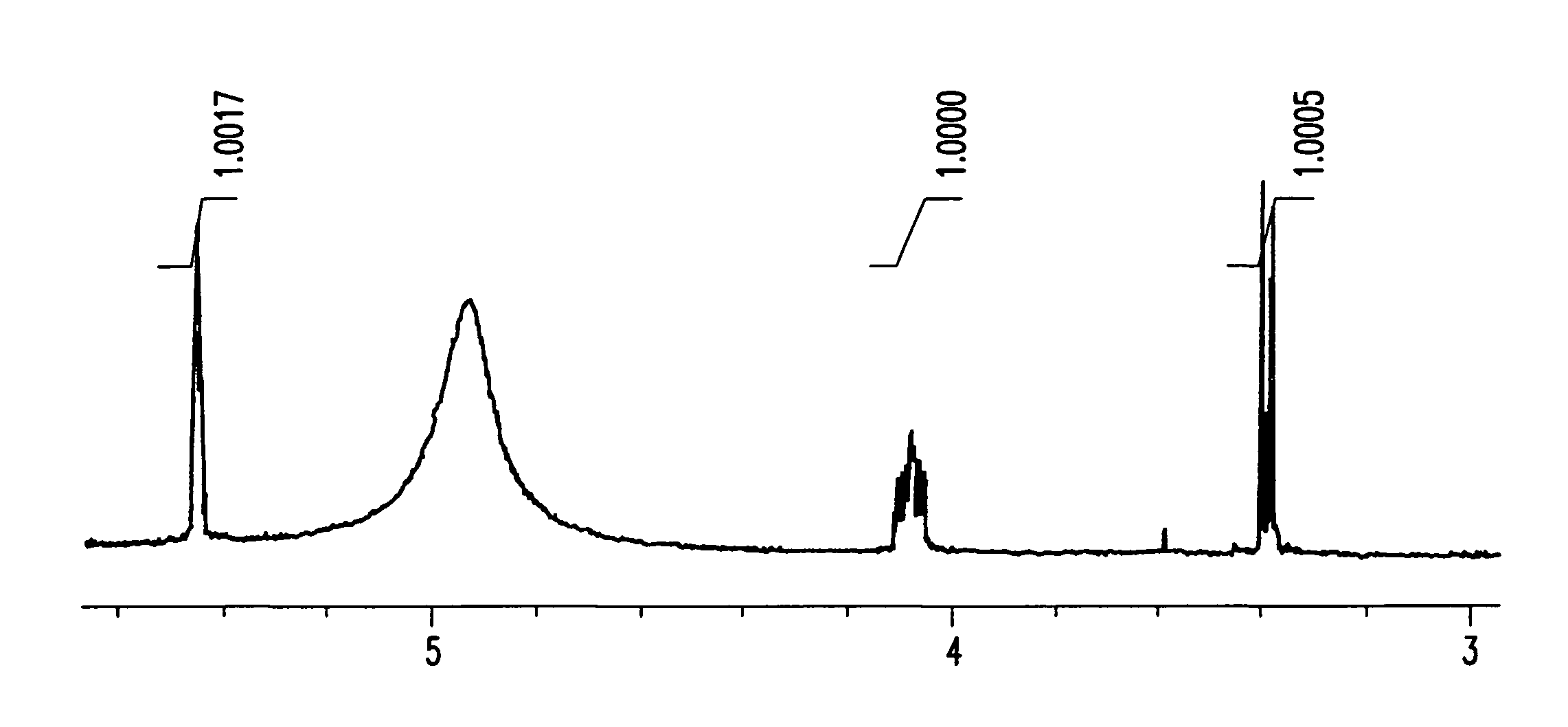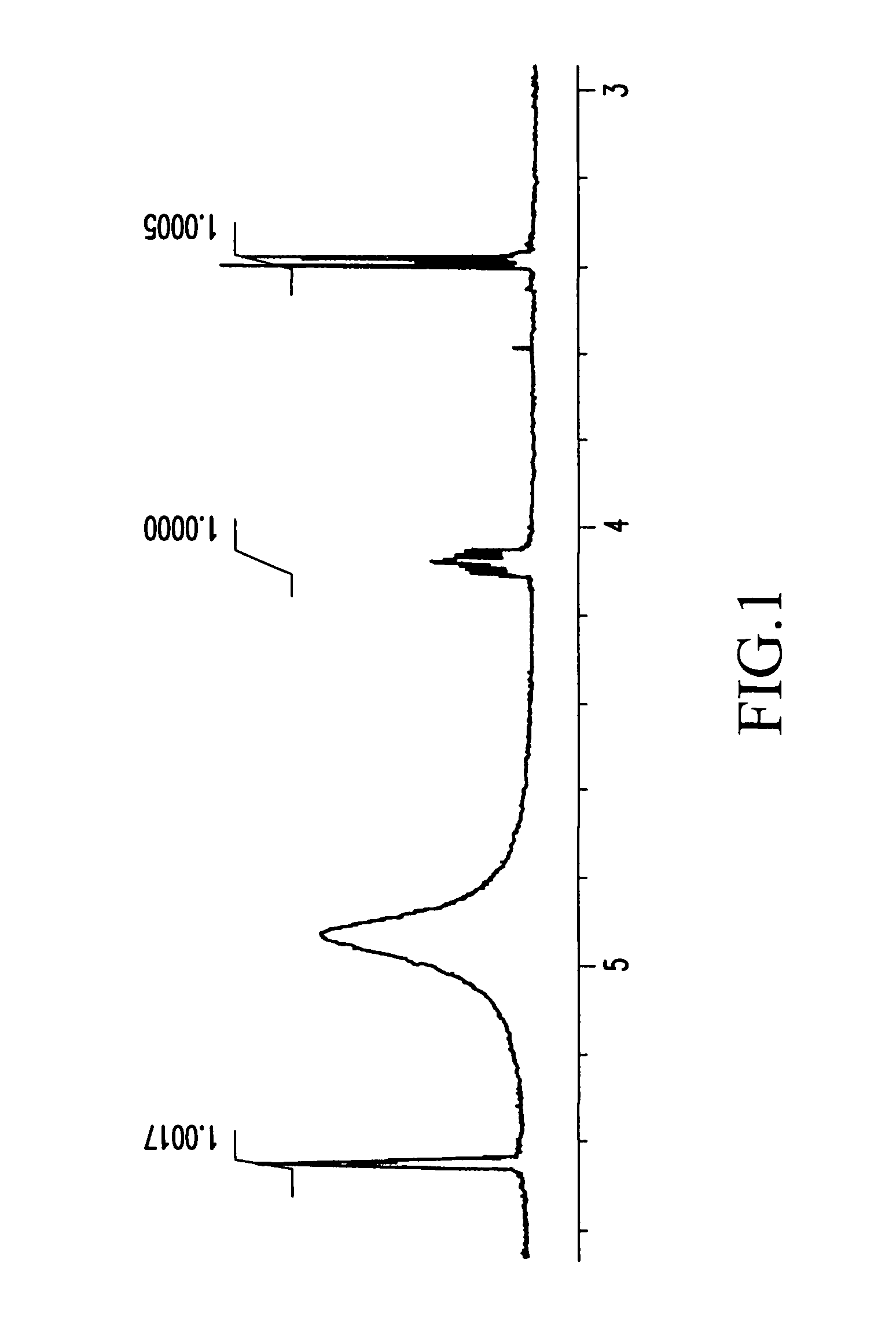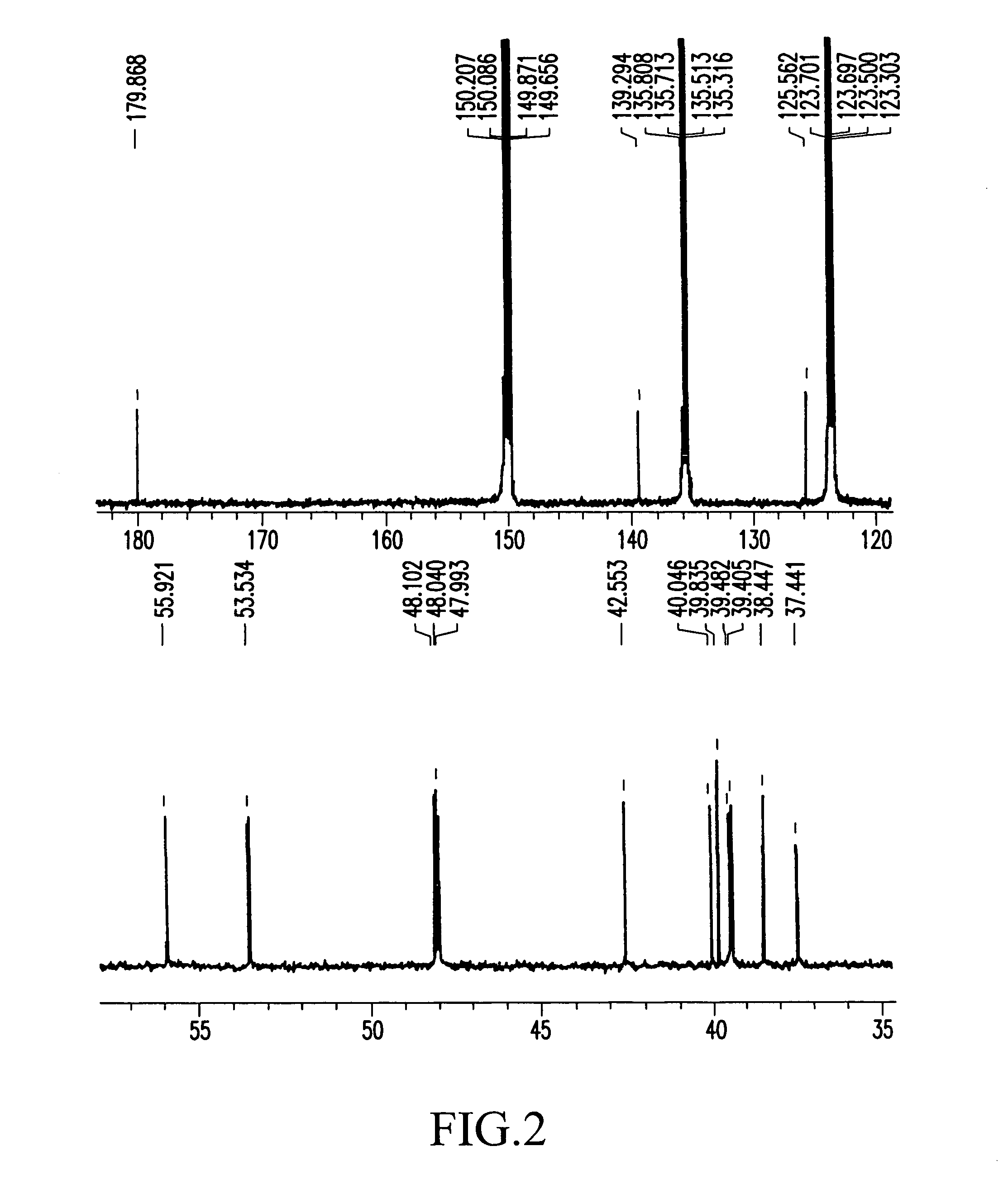Process for producing corosolic acid
a corosolic acid and corosolic acid technology, applied in the field of corosolic acid production process, can solve the problems of limiting the medical usability of corosolic acid, difficult to obtain corosolic acid in pure form, low corosolic acid content in the plant, etc., and achieves high yield and cost-effectiveness.
- Summary
- Abstract
- Description
- Claims
- Application Information
AI Technical Summary
Benefits of technology
Problems solved by technology
Method used
Image
Examples
example 1
[0063]Pyridinium chlorochromate (431 mg) was added to a solution of ursolic acid (456 mg) in methylene chloride and the mixture was stirred at room temperature for 6 hours. The reaction mixture was filtered through Celite. The filtrate was concentrated at reduced pressure and the residue was purified by silica gel column chromatography and crystallized from a liquid mixture of ethyl acetate and hexane to give 3-oxoursolic acid (360 mg, 79% in yield).
example 2
[0064]To a solution of ursolic acid (228 mg) in methylene chloride, 1,1,1-tris(acetyloxy)-1,1-dihydro-1,2-benziodoxol-3-(1H)-one (Dess-Martin reagent, 254 mg) was added and the mixture was stirred at room temperature for 1 hour. The reaction mixture was poured into water and extracted with chloroform. The organic layer obtained was dried on magnesium sulfate and then concentrated at reduced pressure. The resulting residue was crystallized from a liquid mixture of ethyl acetate and hexane to give 3-oxoursolic acid (193 mg, 85% in yield).
example 3
[0065]A solution of DMSO (300 μL) in anhydrous methylene chloride was added slowly dropwise to a stirred solution of oxalyl chloride (185 μL) in anhydrous methylene chloride at −50° C. The reaction mixture was stirred for 20 minutes and then a solution of ursolic acid (456 mg) in anhydrous methylene chloride was added slowly dropwise. Following continued stirring for 20 minutes at the same temperature, triethylamine (830 μL) was finally added dropwise and the mixture was stirred as such for 10 minutes. Stirring was continued for 2 more hours with the reaction temperature gradually being elevated to room temperature. The reaction mixture was poured into 5% aqueous hydrochloric acid and after separating the organic layer, the aqueous layer was extracted with methylene chloride. The combined organic layers were dried on magnesium sulfate and concentrated at reduced pressure. The resulting residue was crystallized from a liquid mixture of ethyl acetate and hexane to give 3-oxoursolic ac...
PUM
| Property | Measurement | Unit |
|---|---|---|
| temperature | aaaaa | aaaaa |
| temperature | aaaaa | aaaaa |
| temperature | aaaaa | aaaaa |
Abstract
Description
Claims
Application Information
 Login to View More
Login to View More - R&D
- Intellectual Property
- Life Sciences
- Materials
- Tech Scout
- Unparalleled Data Quality
- Higher Quality Content
- 60% Fewer Hallucinations
Browse by: Latest US Patents, China's latest patents, Technical Efficacy Thesaurus, Application Domain, Technology Topic, Popular Technical Reports.
© 2025 PatSnap. All rights reserved.Legal|Privacy policy|Modern Slavery Act Transparency Statement|Sitemap|About US| Contact US: help@patsnap.com



